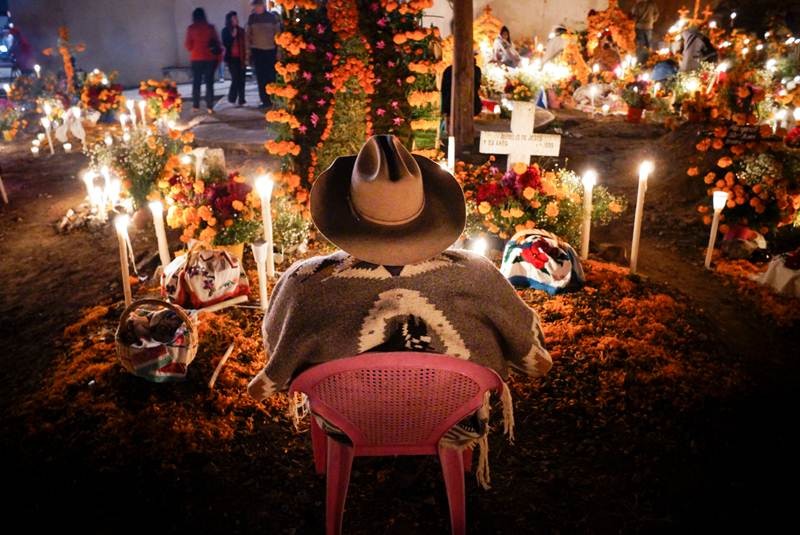Más Información

Embajador Ronald Johnson resalta "excelente" cooperación con México; "seguiremos fortaleciendo esta relación", dice

"¡Fuera!", corren a Noroña de la Universidad de Guanajuato; "porros y reventadores", revira el senador

Con velada recuerdan al magistrade Ociel Baena, asesinado en 2023; "es un referente en la lucha LGBT+"

Obispo acusa negligencia en la desaparición del sacerdote Santiago Álvarez; autoridades están rebasadas, afirma
 Mexico City's Minister of Tourism, Miguel Torruco Marqués, announced today that the ministry is working on making the city's Día de muertos (Day of the Dead) celebration the biggest of its kind not only in the country but in all of Latin America in upcoming years.
Mexico City's Minister of Tourism, Miguel Torruco Marqués, announced today that the ministry is working on making the city's Día de muertos (Day of the Dead) celebration the biggest of its kind not only in the country but in all of Latin America in upcoming years.
At a press conference for the massive celebration, he said he expects it to become one of Mexico's biggest, surpassing Carnival in Veracruz.
Furthermore, in the next 10 years, he hopes this celebration will go on to become one of the biggest in all of Latin America, possibly even surpassing Rio de Janeiro's Carnival, which is the biggest in the world with around 2 million visitors each year.
The Ministry of Tourism expects around 165 thousand tourists to attend this year, 80% of which will be from Mexico and the rest from around the world. They also expect the event to boost the local economy by 52 million dollars.
The Día de muertos celebration kicks off October 29 at 3:00pm, with a 3-hour long inauguration parade that departs from the city's Angel of Independence monument and finishes in the city's main square, the Zócalo, where more than 1,000 volunteers, dancers, giant marionettes and floats will participate.
 (World-renowned Mexican artist Betsabeé Romero, shown here in her studio, will be the art director for the over 120 altars to be constructed at the Zócalo. Photo: EL UNIVERSAL Archives)
(World-renowned Mexican artist Betsabeé Romero, shown here in her studio, will be the art director for the over 120 altars to be constructed at the Zócalo. Photo: EL UNIVERSAL Archives)
The over 120 ofrendas (which are altars that are traditionally built as part of the celebration to honor the dead and decorated with tissue paper decorations, skulls, food, etc.) at the Zócalo will be built under the creative guidance of the visual artist Betsabeé Romero.

(A typical ofrenda built to honor the dead at a Mexican cemetary. Photo: EL UNIVERSAL Archives)
Guests at the Zócalo will also be able to enjoy musical guests such as Julio Revueltas, La Orquestra Típica (one of Mexico's oldest orchestras founded over 125 years ago), Susana Harp, Triciclo Circus Band, and many more.

(Pan de muerto is traditonally shaped like a round loaf with rolled strips of dough layered on top that resemble the bones of the dead. Photo: EL UNIVERSAL Archives)
Mexico's National Bakery Association will also be giving away free Pan de muerto bread, a type of sweet roll traditionally baked during the weeks leading up to the Día de muertos, on November 1 and 2, fresh out of the oven, to guests in attendance.
There will also be night time bike tours and many more cultural activities at nearby museums and historical buildings (for a full list of activities and times, visit the Ministry of Culture's official website http://data.cultura.cdmx.gob.mx/celebraciondemuertos/)
The Día de muertos tradition, which is recognized by UNESCO as a Cultural Heritage of Humanity, will also be celebrated at Mexico's many embassies around the world as a way to promote and share the cultural significance of this ancient tradition with the rest of the world.
Noticias según tus intereses
[Publicidad]
[Publicidad]










